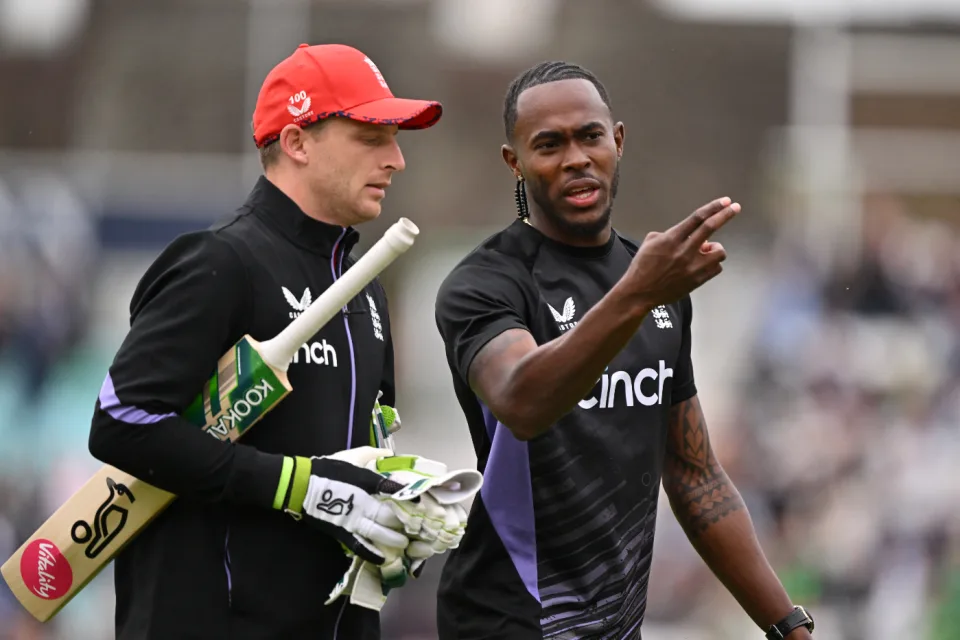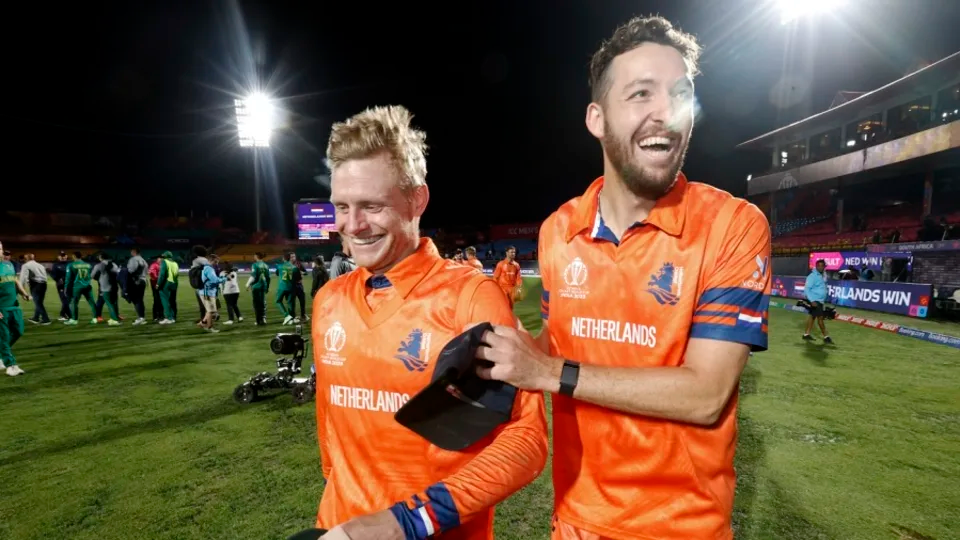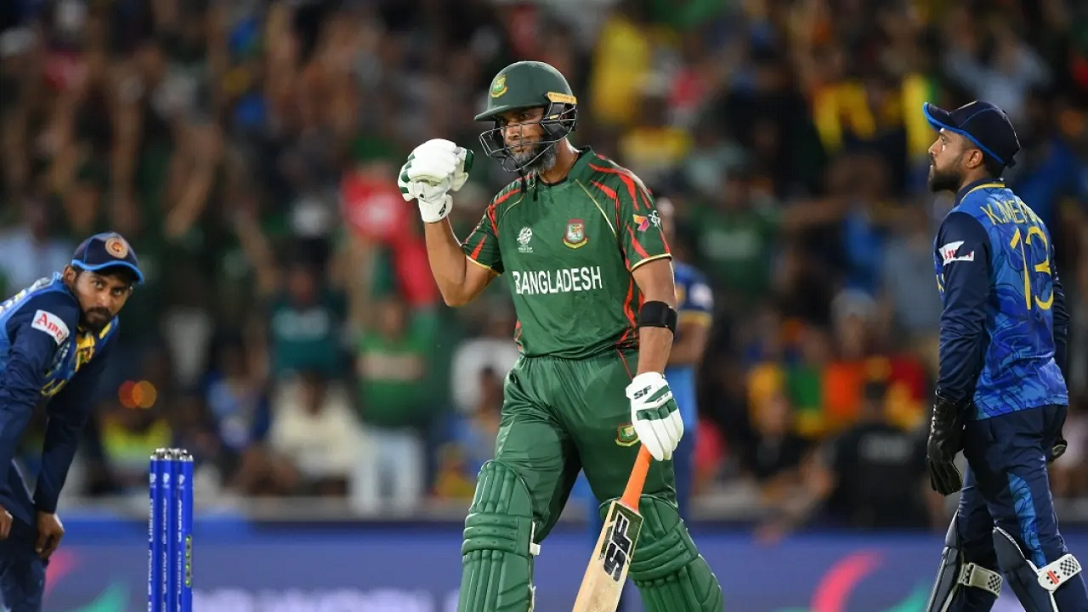Sports
A Pfeiffer, a century and the rules of Rugby

by Rajitha Ratwatte
A cloudless blue sky, the temperature hovering around 10 degrees Celsius, dry conditions underfoot all the requirements for a day of glorious running rugby in Aotearoa – New Zealand. The Maori All Blacks (basically a name for the second string) and the mighty All Blacks themselves on show against the Pacific nations of Samoa and Tonga. The Mt Smart Stadium in Auckland full of colourful Pacifica come to support their teams, all in all, a rugby fan’s day in heaven!
The betting heavily in favour of the “black” teams but the first match got off to a hotly contested start. Manu Samoa in this their second outing in two weeks against the Maori Abs’ keeping the home team scoreless for the first 20 minutes and making the scores level in the 23rd minute. The NZ no10 Oteri Black who was probably playing his last game on NZ soil (choosing to take a lucrative overseas contract) began to dominate play with some searing runs and judicious kicking. The final score read 38 – 21 to the Maori All Blacks in a good hard-fought game however, unfortunately, it was not the rugby that was the issue!
The controversy began a minute before half time the NZ team crossed the line, but the try was denied by the on-field refereeing team due to non-grounding. When referred to the TMO not only was this confirmed but the TMO found a technicality and the Samoan number five was accused of collapsing a maul basically inches in front of the try line (if it happened over the line the rule doesn’t apply) and the mandatory punishment of a penalty try and a yellow card was applied by Mike Frazer the on-field ref. Now Mike Frazer had a terrible series of games during the Super Rugby Aotearoa season too by having no feel for the on-field situation of the game and simply applying the “rule is a rule” mentality! The Samoans went into halftime with the score reading 19–7 and facing the possibility of being one man short for the first eight minutes or so of the second half.
They came back roaring and scored a try under the posts within two minutes of the restart, being one player short, taking the score to 19–14. The crowd went wild, and rock music was pounding from the great sound system that the Mt. Smart Stadium has, blue flags everywhere, and even the old ladies dancing in the aisles. Controversy struck again! Another foray across the Samoan line by the Maori Blacks seemed to result in a knock-on over the line. The TMO had a look and lo and behold a Samoan player on the ground seemed to be knocking the ball out of the hands of the Black player. Pedanticity (is that even a word?) prevailed once again and in the words of Sir John Kirwan, on the commentary team “a sledgehammer was used to kill an ant”, another penalty try and a yellow card from Mike Frazer! I have spoken about the interpretation of the rules and the dire necessity for the on-field referee to have the ability to look at the game situation and make a call when applying the rules. Is this what we want our game to be? Mindless application of the rule book by officials who are unable, or do not have the confidence and integrity to read the game and make a judgment on the current implications and future repercussions to the flow of the game, of the actions of a player when applying them. It is up to the world body to take action and do it NOW!
The second game was expected to be a big win for the All Blacks and many bets had been recorded for a 100+ scoreline. The All Blacks were at full strength with the only possible weakness being Ricco Ioane at no13 a controversial decision that is sure to have repercussions when the standard of the opposition gets better. However, Ricco has had his pathway to no13 in the All Blacks paved in gold, and ever since he moved from the wing to center for the Auckland Blues and got the unreserved backing of the press, it was simply a matter of time. Aaron Smith was not needed for the game and T.J. Peranara the other contender for the number nine jersey was also not around. Beauden Barret was on the bench for the no10 position a good decision because he is primarily a no10 and was wasted at full-back during the last World Cup. Ritchie Mo’uanga was starting at no10, and the team captained by that great servant of NZ rugby, second-rower Sam Whitelock in the absence due to injury of the regular skipper Sam Cane, great decisions by the selectors.
The red jerseyed Tongans proved to be no match with the final score reading 102–0 to the New Zealanders. Will Jordan wearing the number 14 strip for the Blacks helped himself to a Michelle Pfeiffer (5 tries and not wickets as is the usual parlance) in this cricket-like score that was racked up. Jordan was all over the field and showed his flair as a great attacking fullback. Ritchie Mo’uanga was at his immaculate best, but he did miss a few kicks at goal which again may prove a weakness when the opposition gets better. Beauden Barret did a great job when he did come off the bench and even Paddy Tuapoletu, the huge number five ran 35 meters and helped himself to a try in the last few minutes of the game. George Bridges had only one try from the wing, mainly because the ball never reached the wing with the Samoan defence being breached almost at will by the Abs’. Dalton Papalii had a great game in the third row and so did Nathan Blackadder who made his All-Black debut in the footsteps of his illustrious father Todd Blackadder.
A feature was that the Tongans who could have avoided the 100-point scoreline which was achieved after the full-time siren continued to play on when they could have kicked the ball out at the siren. Beauden Barret made his intentions clear that he was going for the three-figure mark when he took a quick dropkick off the penultimate try and restarted play quickly. The officiating was much less controversial but then again there was hardly any pressure.
supersubsports@gamil.com
Sports
England face Australia in the battle of champions

The first truly heavyweight clash of this expanded T20 World Cup format comes freighted with both history and subplots. A rematch of the 2010 World T20 final at Kensington Oval, the match pits Jos Buttler’s defending champions – who are aiming to become the first team to retain the trophy – against the Australian winning machine, victors at the 2021 edition and current world title-holders in Test and ODI cricket. And that’s before you throw in the Ashes for afters.
Already there is added pressure on England, after the rain in Bridgetown led to a share of the points in their opener against Scotland (and that having conceded 90 runs from 10 overs without taking a wicket in a tepid bowling display). Lose to their oldest rivals and it will leave their Super 8 prospects open to being waylaid by the perils of net run-rate calculations, or worse.
The Scotland match was the third abandonment in five suffered by England, after a rain-affected home series against Pakistan, which has clearly hampered their readiness for this campaign after almost six months without playing T20 together. It does not take much for a side to click in this format – and England looked in decent shape when they did get on the field against Pakistan – but Buttler will be anxious for things to go their way on Saturday, if only to avoid further questions referencing the team’s disastrous ODI World Cup defence last year.
Australia, under the laidback leadership of Mitchell Marsh would love nothing more than to add to the English sense of jeopardy – having helped bundle them out of the tournament in India on the way to taking the crown. Their head to head record is less impressive in T20 however, with England having won six of the last seven completed encounters, as well as that 2010 final.
Despite a wobble with the bat, Australia avoided mishap against Oman earlier in the week, the experience of David Warner and Marcus Stoinis shining through in difficult batting conditions. Surfaces in the Caribbean – not to mention those games staged in the USA – have already had teams scratching their heads; rather than the “slug-fest” England had prepared for, following a high-scoring tour of the Caribbean in December, it looks as if boxing smart may be the way to go.
Speaking of Warner, this could be the last time he faces up against England in national colours – and another match-winning contribution would likely reduce the chances of them meeting again in the knockouts. On the other side of the card is Jofra Archer, fresh from an emotional maiden outing at Kensington Oval and ready to take on Australia for the first time in any format since 2020. Can Mark Wood fire up England’s campaign, as he did during last summer’s Ashes? Will Pat Cummins be back to harass the old enemy once again? Seconds out, it’s almost time to rumble.
Cummins is set to return after being rested for the Oman game, which saw Mitchell Starc leave the field with cramp. Starc is understood to be fine and could keep his place – which would likely see Nathan Ellis miss out. Marsh is still not fit to bowl, with Australia likely to continue with the allrounder combination of Stoinis and Maxwell to give them cover.
Australia (probable XI): David Warner, Travis Head, Mitchell Marsh (capt), Glenn Maxwell, Marcus Stoinis, Josh Inglis (wk), Tim David, Pat Cummins, Nathan Ellis/Mitchell Starc, Adam Zampa, Josh Hazlewood
The one change England may consider is Reece Topley coming in for Wood, with the expectation that there will be some rotation among the seamers through the course of the tournament.
England (probable XI): Phil Salt, Jos Buttler (capt & wk), Will Jacks, Jonny Bairstow, Harry Brook, Liam Livingstone, Moeen Ali, Chris Jordan, Jofra Archer, Adil Rashid, Reece Topley/Mark Wood
[Cricinfo]
Sports
South Africa up against their bogey team in batter-unfriendly New York

Once is coincidence, twice is a clue, and three times is proof.
To paraphrase Agatha Christie, that is the narrative around South Africa’s meeting with Netherlands at this T20 World Cup.
The Dutch beat South Africa at the 2022 tournament and ended their semi-final hopes in a match where South Africa appeared to be sleep walking, and then beat them again at the 2023 ODI World Cup, where they exposed South Africa’s vulnerability in the chase. If they to do the treble, not only will Netherlands take the lead in Group D, but they will offer conclusive evidence of the threat they pose to Full Members, especially South Africa.
Of course, it will take some doing after South Africa’s opening performance against Sri Lanka, where they reduced their opposition to their lowest T20I total and chased it down in fairly straightforward fashion thanks to the most stable middle-order of their white-ball era. In Aiden Markram, Tristan Stubbs, Heinrich Klaasen and David Miller, South Africa have bankers and big-hitters and, for this match, they also have the advantage of experience. They’ve already played at Eisenhower Park, and have first-hand knowledge that run-scoring doesn’t come easily;Klassen said they are prepared to use their “cricket brains” and play “smarter cricket”.
But the conditions could be good news for Netherlands, who are not naturally a line-up of big hitters and build their innings on a foundation of turning ones into twos. In other words, they tend to take a slightly more conservative approach to batting, which may work well here, but they’ll be wary of the uneven bounce of the surface and will have to come up with plans to counterattack especially against South Africa’s seamers. Their own bowlers were exemplary in Dallas and will look to build on that performance against a line-up that will likely be more proactive than Nepal’s, but who they have managed to keep quiet not once, but twice in the past. Third time’s the charm, they say.
Anrich Nortje’s stunning return to form against Sri Lanka means South Africa may not have to tinker with the bowling combination, and Gerald Coetzee and Tabraiz Shamsi may have to wait their turns to get a game. The batting line-up should be unchanged, with no space for Ryan Rickelton yet.
South Africa: Quinton de Kock (wk), Reeza Hendricks, Aiden Markam, Tristan Stubbs, Heinrich Klaasen (wk), David Miller, Marco Jansen, Keshav Maharaj, Kagiso Rabada, Ottneil Baartman, Anrich Nortje
Conditions in New York may tempt Netherlands to include an extra seamer and they have Kyle Klein in their squad. But it could come at the expense of a shortened batting line-up and they may not want to risk that.
Netherlands: Michael Levitt, Max O’Dowd, Vikramjit Singh, Sybrand Engelbrecht, Scott Edwards (capt, wk), Bas de Leede, Teja Nidamanuru, Logan van Beek, Tim Pringle, Paul van Meekeren, Vivian Kingma
[Cricinfo]
Latest News
Mustafizur, Rishad, Hridoy dazzle in Bangladesh’s tight two-wicket win over Sri Lanka

Nuwan Thushara’s last over brought Sri Lanka screaming back into the match,as he first bowled Rishad Hossain, and then nailed Taskin Ahmed in front of the stumps with a pinpoint swinging yorker. This left Bangladesh eight wickets down, with 12 runs still to get.
However, the experienced Mahmudullah was at the crease for Bangladesh, and despite some further nervy moments, pushed Bangladesh across the line off the last ball of the 19th over.
But this was a match chiefly decided by Bangladesh’s own outstanding bowling. Mustafizur Rahman was the best among them, using shorter lengths and his cutters efficiently, to claim figures of 3 for 17. Rishad Hossain’s three-for through the middle overs also kept Sri Lanka quiet.
Mustafizur was instrumental in Sri Lanka’s downward spiral through the middle overs, which culminated in a crash-and-burn end. Ultimately, their inability to find boundaries, or even rotate strike against good Bangladesh bowling resulted in their downfall. A score of 125 for 9 always seemed poor on a decent pitch, even if their bowlers made a match of it in the end.
Brief scores:
Bangladesh 125 for 8 in 19 overs (Towhid Hridoy 40, Litton Das 36; Dhanajaya de Silva 1-11, Nuwan Thushara 4-18, Wanidu Hasaranga 2-32, Matheesha Pathirana 1-27) beat Sri Lanka124 for 9 in 20 overs (Pathum Nissanka 47, Dhananjaya de Silva 21; Tanzim Hasan Sakib 1-24, Taskin Ahmed 2-25, Mustafizur Rahman 3-17, Rishad Hossain 3-22) by two wickets
[Cricinfo]












